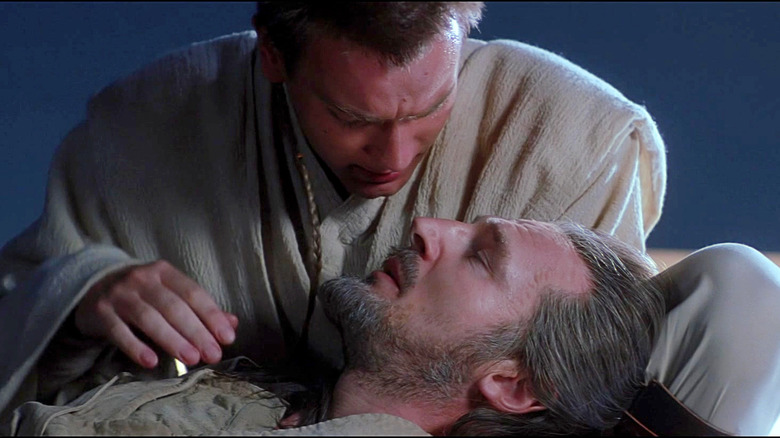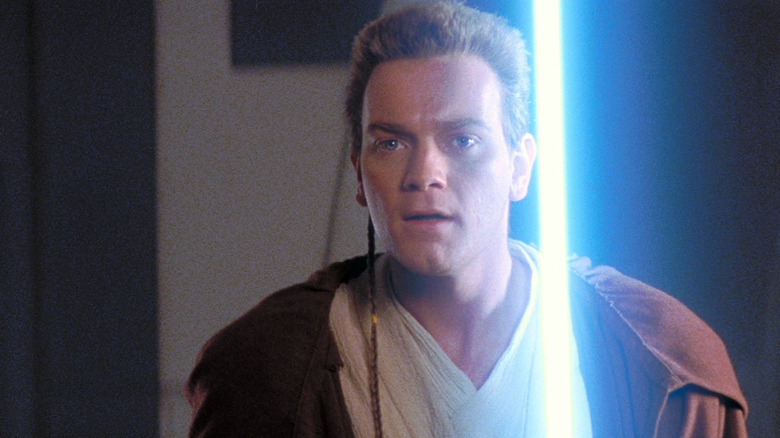Although the term prequel is relatively new, the concept has existed in stories long before filmmaker George Lucas made 1999’s “Star Wars Episode I: The Phantom Menace.” In essence, the idea of a sequel to a film that was made after the fact but takes place before the movie it’s a sequel to is inherently recontextualizing. Using “Star Wars” as an example: when the original trilogy was released from 1977 to 1983, everyone who saw them would tell you that Luke Skywalker was the protagonist of the saga. Once Lucas had finished his prequel trilogy after 2005, one could’ve argued that the entire series was actually about Anakin Skywalker aka Darth Vader, with his son Luke merely taking over the hero duties in the latter three films. Now, after the close of the sequel trilogy of “Star Wars” films from 2015 to 2019, the films have been collectively rebranded “The Skywalker Saga,” as each trilogy focuses on a different character bearing the name of Skywalker.
Even though critics of the films complain that the movies are far too centered on a bloodline, it behooves me to point out that Rey is a Skywalker by choice, not by birth. This notion of a major character choosing to take on the legacy of a name known throughout the galaxy is, as it turns out, not a new one for the series. Long before J.J. Abrams made “Episode IX: The Rise of Skywalker,” Lucas had been pondering a name-swap switcheroo while making “The Phantom Menace.” As was originally conceived, the film’s younger Jedi (played by Ewan McGregor) would’ve been named Qui-Gon Jinn, and the older Jedi (played by Liam Neeson) would’ve been called Obi-Wan Kenobi. Essentially, the movie would’ve been identical to the film we ended up getting, yet this wild twist would’ve had large ripples throughout the next two movies and, by implication, the original trilogy, too, emphasizing one of the saga’s major themes of the road to the Dark Side being paved with good intentions.
The Obi-Wan twist would’ve made the character and the Jedi more multi-faceted
During a recent interview with Lucasfilm storyboard and concept artist Ian McCaig (via Variety), discussing the 25th anniversary of “The Phantom Menace,” McCaig discussed how Lucas’ original concept for the Qui-Gon/Obi-Wan switcheroo was to occur, as well as what line of dialogue from the original “Star Wars” (in which Obi-Wan was played by Alec Guinness) would’ve been directly impacted as a result of the twist:
“For a time, the older Jedi was named Obi-Wan and the younger Jedi was named Qui-Gon. It was very poignant that at the end, as Obi-Wan dies and Qui-Gon defeats Darth Maul and stays with his Master as he passes away, he not only takes on his Master’s quest, but he takes on his name. Qui-Gon becomes Obi-Wan. That’s why when you see Alec Guinness in ‘A New Hope,’ he puts his hood down and goes, ‘Obi-Wan? Now that’s a name I’ve not heard …’ Because he’s not Obi-Wan, he’s Qui-Gon. And right at the end, George changed it.”
It’s easy to understand why Lucas changed his mind about this, as ditching the name switch streamlines and simplifies the story; the filmmaker has long maintained that the “Star Wars” movies are intended for children. Perhaps Lucas was feeling some pressure (either internally or externally) to meet expectations with the film, and knowing that the “I am your father” twist from “The Empire Strikes Back” had helped make that movie such a phenomenon, he thought a big twist needed to be included. Dropping this twist would also allow Lucas to include more of his ideas within the next two movies, rather than be focused on this new Obi-Wan’s secret identity. Who knows — perhaps he already had the idea for what ultimately became the big twist moment of the Prequels, Order 66 from “Revenge of the Sith.”
While the Prequels certainly work fine without the wild twist, it’s a shame Lucas didn’t stick to his initial instincts, as keeping the name swap would’ve added a very intriguing dimension to the character of Qui-Gon/Obi-Wan as McCaig described. It also would’ve further highlighted one of the major ideas within the Prequels, which is that the Jedi were doomed long before Order 66 was executed. Throughout the films, the Order makes one bad decision after another, sticking too close to their antiquated systems of belief and law while ignoring things that are happening around them until it’s too late, and a Qui-Gon-as-Obi-Wan lurking in their midst could’ve been a cool example of their short-sightedness. Given Lucas’ penchant for revising his films after the fact, however, who knows — maybe we’ll see a “Phantom Menace Special Edition” one day, where ADR makes that name switcheroo happen after all.



Leave a Reply